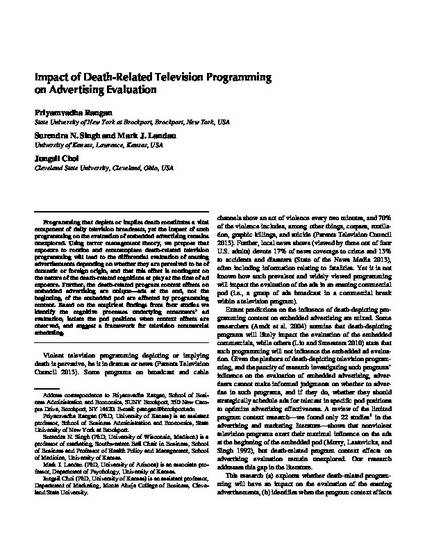
- television programming,
- advertising,
- death; marketing
Programming that depicts or implies death constitutes a vital component of daily television broadcasts, yet the impact of such programming on the evaluation of embedded advertising remains unexplored. Using terror management theory, we propose that exposure to routine and commonplace death-related television programming will lead to the differential evaluation of ensuing advertisements depending on whether they are perceived to be of domestic or foreign origin, and that this effect is contingent on the nature of the death-related cognitions at play at the time of ad exposure. Further, the death-related program context effects on embedded advertising are unique—ads at the end, not the beginning, of the embedded pod are affected by programming content. Based on the empirical findings from four studies we identify the cognitive processes underlying consumers’ ad evaluation, isolate the pod positions when context effects are observed, and suggest a framework for television commercial scheduling.
